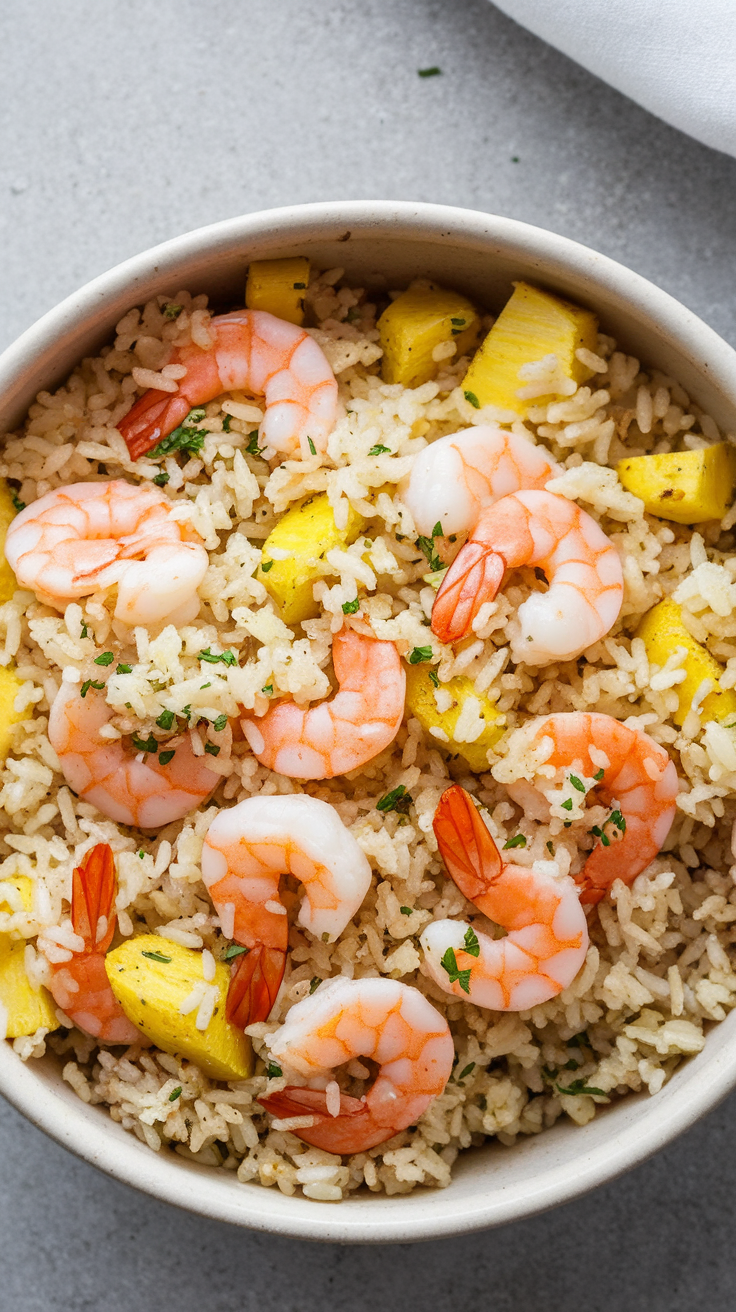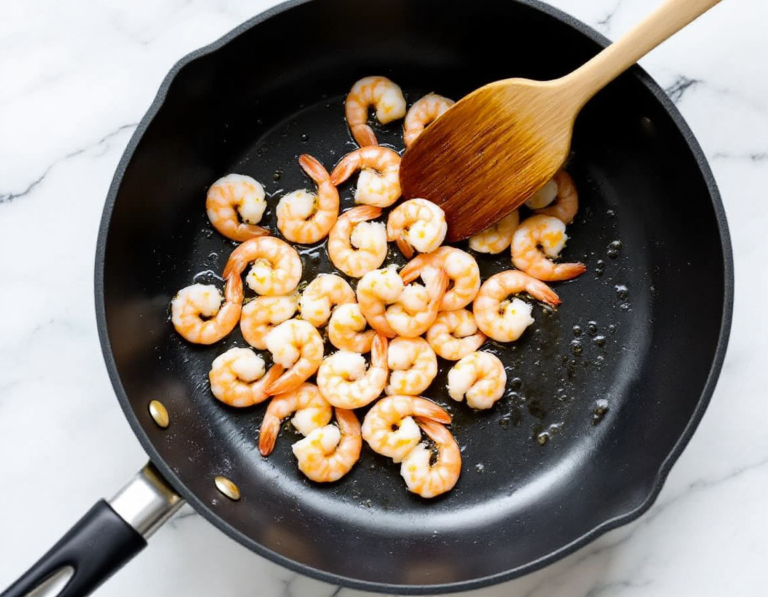Shrimp fried rice is like a warm, comforting hug on a busy day, a dish that effortlessly blends simplicity with flavor. I remember the first time I tinkered with this recipe—my kitchen was filled with the sizzle of shrimp in the pan, and the aroma was enough to make the neighbors curious. It’s a quick fix for those nights when you crave something deliciously satisfying, yet don’t want to spend hours cooking.
Steps
- Prepare the Shrimp: Mix the shrimp with salt, pepper, and cornstarch in a bowl. Allow the mixture to rest for ten minutes at room temperature.
- Heat the Pan: Place a large sauté pan or wok over high heat. Once hot, add a tablespoon of oil, ensuring it coats the pan evenly.
- Cook the Shrimp: Arrange the shrimp in a single layer in the hot pan and fry for 30 seconds without moving them. Flip and cook the other side for another 30 seconds, then remove with a slotted spoon.
- Scramble the Eggs: Lower the heat to medium. If needed, add more oil to the pan before adding the beaten eggs. Stir quickly to scramble and remove them while they are still slightly runny.
- Sauté the Green Onions and Rice: Clean the pan with a paper towel and return it to high heat. Add the remaining oil, then sauté the green onions briefly. Add the rice and mix well, spreading it out to fry for 1 to 2 minutes without stirring.
- Combine Ingredients: Sprinkle soy sauce over the rice and stir. Add the carrots, peas, shrimp, eggs, and sesame oil, mixing everything together. Let the mixture heat until sizzling hot and adjust seasoning with more soy sauce if desired.
Ingredients
- 8 ounces small raw shrimp, shelled and deveined
- 1/2 teaspoon kosher salt
- Freshly ground black pepper
- 1/2 teaspoon cornstarch
- 3 tablespoons peanut oil, canola oil, or rice bran oil
- 3 large eggs, beaten
- 2 green onions, minced
- 4 cups leftover rice, grains separated well
- 3/4 cup frozen peas and carrots, defrosted
- 1 tablespoon soy sauce (or gluten-free soy sauce for a gluten-free version), plus more to taste
- 1 teaspoon dark toasted sesame oil
Nutritional Values
Calories: 1676 | Total Fat: 64g | Saturated Fat: 12g | Cholesterol: 844mg | Sodium: 3096mg | Total Carbohydrates: 196g | Dietary Fiber: 8g | Sugars: 8g | Protein: 72g | Vitamin C: 16mg | Calcium: 328mg | Iron: 12mg | Potassium: 1036mg
FAQ
- What type of rice works best for fried rice?
- Chilled leftover rice is ideal for making fried rice. Freshly cooked rice can become mushy, whereas leftover rice that has dried out a bit is perfect for frying.
- What proteins can be used in fried rice besides shrimp?
- Fried rice is versatile and can include various proteins such as chicken, fish, tofu, or the shrimp featured in this recipe.
- Why is it important to cook ingredients separately in fried rice?
- Cooking ingredients separately helps maintain their individual flavors and prevents them from becoming mushy. Start with the protein, followed by the eggs, and then the rice, combining everything at the end.
- How can I customize the flavor of my fried rice?
- You can add different spices, sauces, and vegetables to make the dish your own. Readers have added ingredients like garlic, onion, and oyster sauce for extra flavor.
- What is a key tip for achieving a good texture in fried rice?
- To get a nice browning on the rice, minimize stirring. Spread the rice in the pan and let it cook without moving it to allow the pan to do the work.
Tips
- Use Cold, Leftover Rice: For the best texture, use chilled, leftover rice as it fries better than freshly cooked rice, which can be too moist and become mushy.
- Cook Ingredients Separately: To preserve the individual flavors and prevent them from blending too much, fry each component separately. Start with the shrimp, followed by the eggs, and then combine everything at the end.
- Opt for High Heat: Ensure your pan is hot before adding oil or ingredients. High heat helps in quick frying and prevents ingredients from sticking to the pan.
- Minimize Stirring for Browning: To achieve a nice browning on the rice, avoid constant stirring. Spread the rice evenly in the pan and let it sit to develop a crispy texture.
Equipment
- Wok or large sauté pan (preferably seasoned cast iron or hard anodized aluminum)
- Slotted spoon


